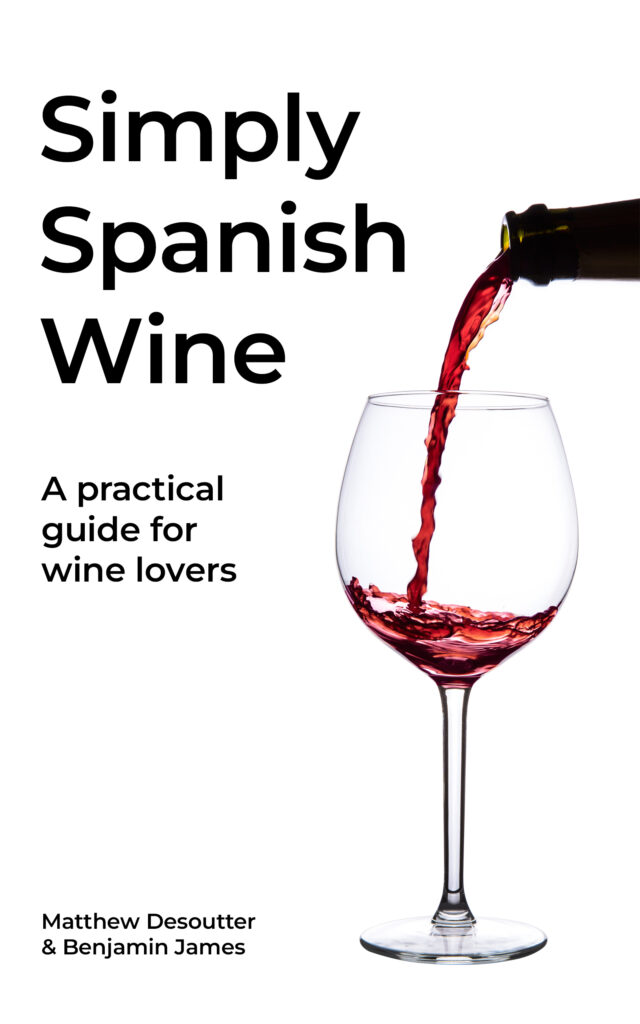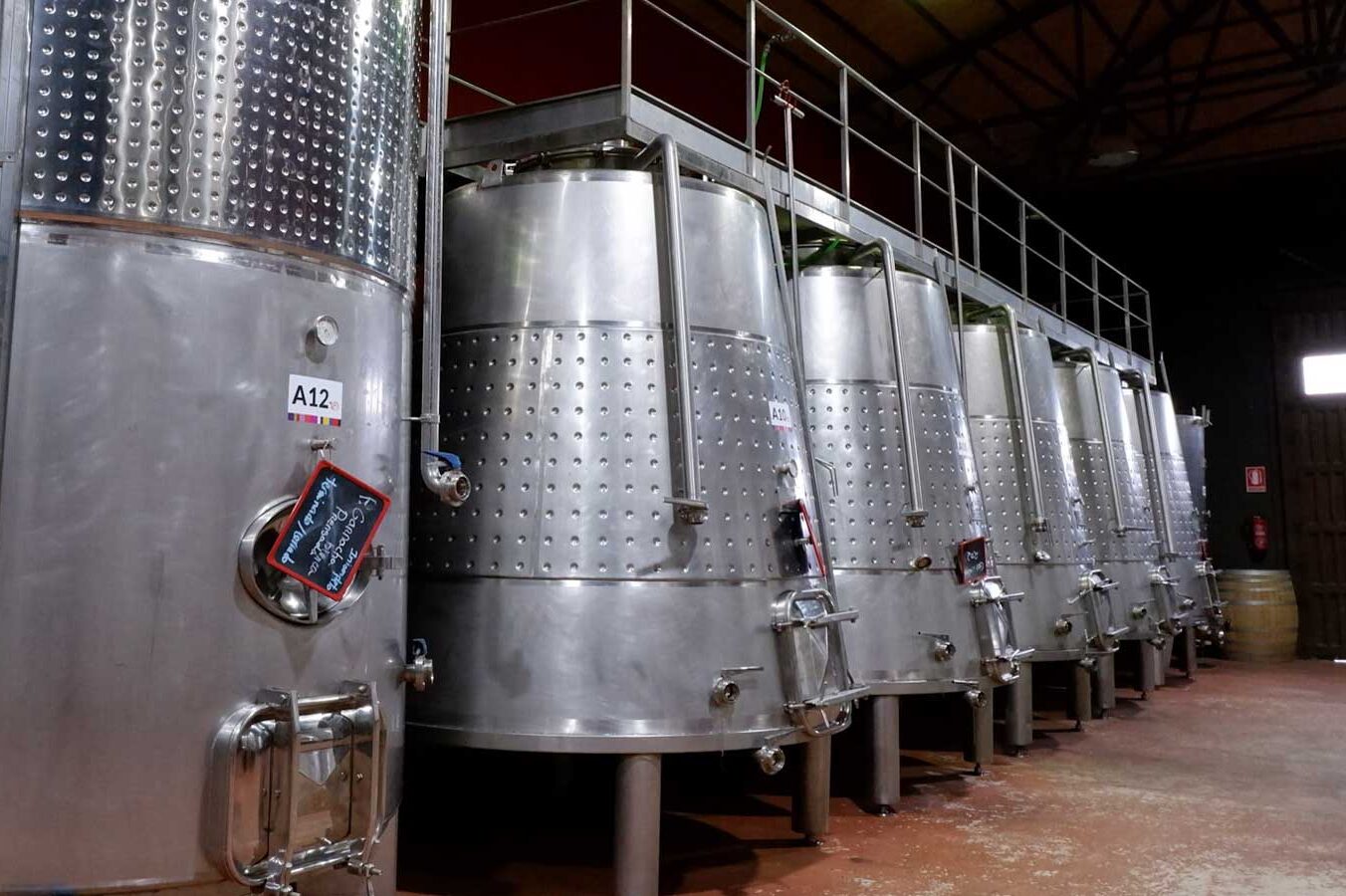We may all love wine, but not everyone stops to think how the wine they’re drinking got to the glass. But for those that do, we thought we’d outline the process from grape to glass.
This article focuses on the process of making white wine. But we also have an article on How Red Wine is Made. The processes are similar, so don’t be surprised if there is some overlap in the two articles. And you can also read about How Cava is Made.
So, as with red wine, the fundamental process for making white wine involves yeasts interacting with grape juice. With a little bit of warmth, the yeasts start to feed on the sugars in the grape juice and turn them into alcohol.
But there are any number of decisions wine makers can make along the way that affect the end result, and the process can get quite complicated when you get into the detail.
Things begin with the grapes being harvested. This is a critical time for winemakers. The grapes have to be picked at just the right moment – too early and they won’t have ripened enough, meaning there won’t be enough naturally occurring sugar in the grapes before they are fermented, and the final wine may end up being too acidic. But picking late is risky too; over-ripe grapes have too much sugar which can make for very alcoholic wines with low acidity – what the experts call “flabby” wines. So, the oenologist’s decision as to when to pick is vital.
Once they give the go ahead it’s full steam ahead to harvest all the grapes as quickly as possible – either by hand or with machines depending on the size and layout of the vineyards. In places like Ribeira Sacra for example, vineyards cling to the steep sloping banks of the Xil and Miño rivers, and machine harvesting is impossible. Whereas in parts of Rioja, La Mancha or Rueda (to name just a few) you’ll find larger vineyards on relatively flat land where grape harvesters – tall, tractor-like machines which can straddle the vine rows and pluck the grapes off automatically – can whizz through the harvest in much less time.
Once harvested, the grapes are usually loaded on to trailers and driven by tractor to the winery where we can start getting to work on them. In very hot climates where high temperatures risk spoiling the fruit before it reaches the winery, grapes are sometimes harvested at night when it is cooler or kept refrigerated between vineyard and winery.
Once the grapes arrive at the winery, they go on to the sorting table, a kind of mini conveyor belt like at the supermarket where dexterous hands sift out any rotten berries or leaves so you are just left with healthy bunches of grapes.
The next step for white wine generally consists of destemming and crushing the grapes before the pomace – the mass of grape skins, stems, seeds and pulp – is pressed to separate the liquids from the solids. This is the major difference in the process for red and white winemaking: with white wine, the ¨solids¨ get separated from the juice before fermentation begins, whereas for red wine everything gets fermented together, grape skins and all.
Contact between grape skins and juice encourages the transfer of things like phenolics which, in the case of reds, add colour and tannins to the wine. But in white wines, phenolics can encourage undesirable oxidation and make the wine darker and more astringent. So, the challenge for the white winemaker is to manage this process carefully so that the delicate flavours don’t get smothered and can shine through in the final wine.
The clear liquid, or must, is then pumped off into a stainless steel vat – or sometimes a wooden barrel for so-called barrel fermented white wines – ready for alcoholic fermentation to begin. Before that happens, as for red wine winemakers need to make another decision – cultured yeasts or natural ones. Cultured yeasts are ones that have been specially prepared to produce a controlled fermentation. A lot of wineries prefer this because it gives them consistent results and means they can be pretty sure how the finished wine will turn out. But many winemakers opt to work with natural yeasts. These are the yeasts that come in on the grapes from the vineyard and are also present in the air inside the winery.
Put like this, using cultured yeasts may sound a bit ‘industrial’, but the reality is that winemaking is a business and if you want a consistent quality in your product, it sometimes pays to use a consistent method. One method is not ‘better’ than another. They’re just different approaches and form part of the overall way in which different wineries make their wines.
Either way, with the yeasts and the must now happily combined, fermentation can get underway. White wines are fermented at lower temperatures than red wines, generally between 18 – 20ºC – to help preserve the more delicate aromas of the fruit.
Now if you read our article on making red wine, you’ll see we talk quite a bit about ‘punching down’ and ‘pumping over’ – two methods for keeping the must in contact with the grapes skins as they ferment to extract maximum flavour and characteristics. But because white wine is fermented as just liquid, with no grape solids in the mix, there is no need for that process. So, apart from keeping an eye on the temperature, winemakers can leave white wine on its own to quietly ferment away.
Once the yeasts have done their work, they die and float to the bottom of the fermenting tank. These dead yeasts help form what we call the lees, which help add flavour and body to white wine.
Fermentation continues for as long as there are sugars for the yeast to feed on and the temperature is at the right level. In some wineries, fermentation is allowed to continue until it reaches its natural conclusion. But other wine makers control the process more directly by monitoring sugar levels in the fermenting wine. When the sugar and alcohol content reach the desired levels, they then lower the temperatures to bring the fermentation to a controlled end.
Another step which is often included at this stage when making white wine is malolactic conversion, or malo as it’s sometimes referred to. This is a natural process where bacteria convert malic acid, which is quite sharp, into lactic acid, which is softer and more buttery (it’s the acid found in dairy products). This makes the final wine softer and rounder in the mouth. Malolactic fermentation is a natural process, but some winemakers will intervene to control how much takes place – either by using bacteria to actively encourage the fermentation or by controlling temperatures to prevent too much malolactic fermentation from occurring, thereby holding onto some of the wine’s natural acidity.
We are now getting to the final stages. We have a fermented liquid, and malolactic fermentation is out of the way. But there are still further decisions for the winemaker to make – most notably blending and ageing.
If winemakers are producing wines from a blend of grapes – or in some cases the same grapes grown in different plots, they will often ferment them separately and then blend them together to form the final wine. This process is known rather grandly as assemblage, or ensamblaje in Spanish.
Once blending is out of the way, the winemaker needs to decide if his or her wine is going to be aged for a period of time before it goes on sale. If so, at this point it’s often racked off into wooden barrels – or, increasingly, other materials like concrete or clay – and allowed to sit and age peacefully for the requisite period of time (you can find out more about ageing in our article here).
Whether aged or not, the wine is now ready to be put into bottles. But before that is done it needs a final process of clarification to remove any last remaining particles and leave us with a lovely clear liquid. Left to its own devices, the wine would actually clear by itself naturally over time, but sometimes winemakers need to speed up the process. This is done in two ways – fining and filtering. Fining means the addition of special fining agents to help coagulate and absorb the microscopic particles in the wine. Traditionally many of these agents were derived from milk, egg white or even, in the case of isinglass, the bladders of fish! These are all still used, but in addition nowadays there are other vegetarian options available too. Filtering is, as you would imagine, the process of passing the wine through a series of filters to take every last solid out of the final liquid.
Increasingly winemakers – particularly so-called natural winemakers – opt for a “minimum intervention approach” in order to highlight the natural characteristics of the wine and that can mean skipping the fining and filtering stage altogether. This can mean that their wines have a slightly cloudy aspect to them. We are used to wines being clear so can sometimes be put off by that, but it’s by no means and a bad thing and unclear wine does not mean bad wine.
Finally, we get to the bottling stage. There isn’t much to be said for this – wine goes into a bottle and a cork gets added. But it is important to note that once it’s in the bottle wine continues to evolve, taking on what are known as tertiary aromas associated with ageing (as opposed to primary aromas from the vineyard, or secondary aromas from the winemaking process itself). To help this process along, a lot of wineries will keep their bottled wine in their cellars for some time before releasing it onto the market. In most cases this is just a short time to let the wine rest and the flavours combine fully. But in others wine can be bottle-aged for several years until they are in optimum condition for sale.
So, there we have it. How red wine is made from start to finish. If you’re interested to see the differences between red and white wine production, you can dive into our sister article on how white wine is made. Otherwise, we suggest diving into a glass of red and savour the end product of all that hard work.
Cheers!

Enjoyed this content?
Then why not get a copy of Simply Spanish Wine: A Practical Guide for Wine Lovers? Available now on Amzaon US, UK, Spain and more.

